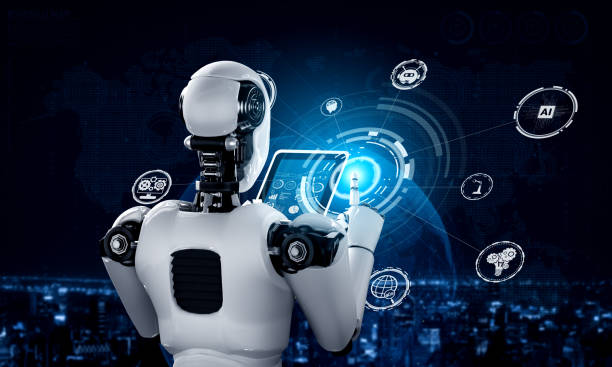Artificial Intelligence (AI) has brought a profound transformation to the world of robotics, enabling machines to perform complex tasks, adapt to changing environments, and even interact with humans in meaningful ways. AI-powered robots are not only revolutionizing automation in industries such as manufacturing, healthcare, and logistics but are also enhancing human interactions in customer service, personal assistance, and education. This article explores how AI-powered robots are reshaping the future of automation and human-robot collaboration.
The Evolution of AI in Robotics
Traditional robots were designed for repetitive, predefined tasks, often requiring human supervision and lacking adaptability. However, with the integration of AI, modern robots can analyze data, learn from experiences, and make intelligent decisions in real time. By combining AI with machine learning, computer vision, and natural language processing, robots have evolved from simple automated machines to interactive, autonomous assistants capable of working alongside humans.
How AI is Enhancing Automation
1. Smart Manufacturing and Industrial Automation
AI-driven robots are transforming factories and assembly lines by improving efficiency, precision, and safety. Collaborative robots, or “cobots,” work alongside human workers to assemble products, conduct quality inspections, and optimize supply chains. AI-powered predictive maintenance systems also help detect equipment failures before they occur, reducing downtime and operational costs.
2. AI in Warehousing and Logistics
AI-powered robots are revolutionizing logistics and supply chain management. Autonomous mobile robots (AMRs) in warehouses navigate spaces, transport goods, and optimize inventory management. Companies like Amazon and DHL use AI-driven robotic systems to speed up order fulfillment, ensuring faster and more accurate deliveries.
3. Autonomous Vehicles and Smart Transportation
AI is a key driver behind self-driving cars and autonomous delivery robots. AI-powered navigation systems help vehicles recognize obstacles, analyze traffic patterns, and make real-time driving decisions. These innovations are making transportation safer, reducing human error, and increasing efficiency in urban mobility.
AI Robots in Human Interaction
1. AI in Customer Service
AI-powered robots are increasingly being used in customer-facing roles, providing support in retail stores, banks, and hospitality. Humanoid robots like Pepper and SoftBank’s customer service robots assist shoppers, answer questions, and even recognize emotions to enhance customer experiences. AI chatbots and virtual assistants handle inquiries efficiently, reducing the need for human intervention in call centers.
2. AI-Powered Personal Assistants
In homes and offices, AI-driven personal assistants like Amazon Alexa, Google Assistant, and Apple Siri help users with tasks such as setting reminders, managing schedules, and controlling smart home devices. Robotic companions are also being developed to provide emotional support, assist the elderly, and help individuals with disabilities lead more independent lives.
3. AI in Education and Learning
AI robots are enhancing education by providing personalized learning experiences. Interactive robots like NAO and Miko engage students in lessons, language learning, and coding activities. AI-powered tutoring systems analyze student progress and adapt lesson plans to improve learning outcomes.
The Future of AI-Powered Robotics
As AI continues to advance, robots will become even more intelligent, interactive, and capable of handling complex tasks. The combination of AI with technologies like 5G, cloud computing, and the Internet of Things (IoT) will further enhance robotic capabilities. Future AI-powered robots may become integral in healthcare, space exploration, disaster response, and other critical sectors.
However, with these advancements come ethical and societal challenges, including concerns over job displacement, privacy, and the need for regulations to ensure responsible AI development. Balancing innovation with ethical considerations will be essential for maximizing the benefits of AI-powered robotics while addressing potential risks.
Conclusion
AI-powered robots are not just transforming automation—they are reshaping how humans interact with machines in daily life. From smart factories and warehouses to customer service and education, these robots are revolutionizing industries and improving human-robot collaboration. As AI-driven robotics continues to evolve, the possibilities for a more efficient, intelligent, and interactive future are limitless.

